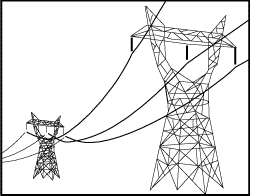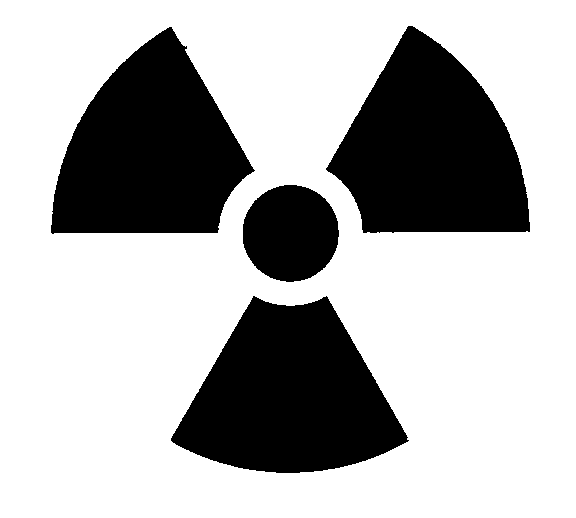
TO: Central Docket Section (6102)
ATTN: Docket A-95-12
U.S. E.P.A.
401 M Street, SW
Washington, DC 20460-0001
FROM: Amy Shollenberger
Senior Policy Analyst
Public
Citizen’s Critical Mass Energy Project
215 Pennsylvania Avenue,
SE
Washington, DC 20003
202-454-5118
RE: Comments on EPA Proposed Rule-Environmental Radiation Standards for Yucca Mountain, Neveda (40 CFR 197)
DATE: November 15, 1999
Summary
Several problems exist with the EPA’s Proposed Rule (40 CFR 197), which is too lenient and would likely lead to serious health problems for people living near the nuclear waste dump, or for people using the products produced near Yucca Mountain. The Proposed Rule would set radiation standards that were dictated by the capabilities of the site and engineered barriers, rather than by a baseline for acceptable public and environmental health levels. Thus, the Proposed Rule shifts the focus of the release standards from a "public/environmental health" perspective to a "capability of the mountain" perspective. Further, the Proposed Rule uses a "reasonably maximally exposed individual" to determine radiation dose, which does not adequately address the risk faced by individuals living near the repository.
Misplaced Focus
The Proposed Rule places the focus for the release standard on the estimated capability of the proposed repository, rather than on an acceptable amount of risk for humans and the environment. Instead of starting from a baseline of what would be safe for the environment and the public, the Proposed Rule’s standard is based on what the repository can accomplish. This focus is not only misplaced, it is also absolutely inappropriate. The mission of the U.S. Environmental Protection Agency is "to protect human health and to safeguard the natural environment — air, water, and land — upon
which life depends." Further, the EPA’s purpose is to ensure that "all Americans are protected from significant risks to human health and the environment where they live, learn and work," and "national efforts to reduce environmental risk are based on the best available scientific information." The Proposed Rule’s willingness to accommodate a repository that will not be able to adequately contain radioactive materials goes against the EPA’s mission and purpose by not placing the priority for the standard on public and environmental health.
Is our rationale for the period of compliance reasonable in light of the NAS recommendations?
The Proposed Rule states, "To delay the movement of radionuclides into the biosphere, DOE plans to use multiple barriers." It is unacceptable to set a period of compliance based on the time frame DOE determines it can successfully delay release of radionuclides. According to the NAS recommendations, the period of compliance should be "the time when the greatest risk occurs, within the limits imposed by long-term stability of the geologic environment." The Proposed Rule calls for a compliance period that is set by DOE’s level confidence in the repository’s ability to contain the waste and a time frame that is imaginable from a policy and scientific viewpoint. This shorter compliance period is recommended even though the NAS and the DOE predict that peak releases will occur after the 10,000 year period. The excuse that uncertainty about risks after the 10,000 year period justifies a shorter period of compliance is not acceptable. The standard should start from the assumption that the repository is expected to contain the waste 100% (0 release) forever, and work back from there as to what is an acceptable level of imperfection, rather than assuming that the repository will fail and begin the calculations from the point of assumed failure.
The Proposed Rule states that estimates vary on the time for peak dose from a few tens-of-thousands of years to hundreds-of-thousands of years. Thus, it seems that a period of compliance of at least 50,000 years would be called for, with a preferable period of 500,000 or even 1,000,000 years. Setting the compliance period at the absolute lowest end of the scale of estimates for peak dose only serves to validate the hopelessness of permanent isolation of the nuclear waste.
The Proposed Rule’s statement that extending the compliance period for the protection of the individual to the time of peak dose would be an impractical approach for Yucca Mountain simply highlights the fact that Yucca Mountain is an impractical alternative for permanent disposal of high level radioactive waste. If the DOE cannot develop a method for accurately determining when peak dose will occur or what that peak dose will be, then it is difficult to believe that DOE can develop a system for safe transportation and containment of nuclear waste in a permanent repository.
Which approach for protecting ground water in the vicinity of Yucca Mountain is the most reasonable? Is there another approach which would be preferable and reasonably implementable? If so, please explain the approach, why it is preferable, and how it could be implemented.
Ground water is perhaps our most important natural resource, and as such it is vital that we protect it. As such, the Proposed Rule’s inclusion of a separate ground water protection standard is critical. Although it would be preferable to have a standard of 0 mr, the Proposed Rule’s standard of 4 mr would be consistent with the WIPP standard and the Safe Drinking Water Act. The Proposed Rule for a Yucca Mountain repository should also set a point of compliance for ground water that is at least consistent with the WIPP standard. This means that the controlled area should be no larger than 100 square kilometers, with its boundary being no farther than 5 kilometers from the location of the emplaced waste, and include the ground water beneath it. Viewing this question from a site-specific perspective, ground water quality protection is a major concern because, unlike WIPP, the potable ground water at Yucca Mountain is a resource shared by the public, and it should be at least as well protected as other ground water supplies across the nation.
The Proposed Standard would require DOE to predict the contamination
level of a "representative volume" of ground water, which is defined as
"the volume of water that would supply the annual water demands of a
defined hypothetical community that could exist in the future at the point
of compliance for the ground water protection standards. The proposed
point of compliance of 20-30 km is neither reasonable nor acceptable.
Because ground water is such a precious resource and because "its
contamination is far more difficult to monitor or remove than is
contamination in air, surface water, or soil,"
the strictest possible
standards should be applied to protecting it. Assuming that any leaks of
radiation will be diluted by the time they reach wells used by neighboring
communities is not a viable option for ground water protection. The
Proposed Rule itself states, "plumes of contaminants move slowly through
aquifers and may be present for many years, sometimes for decades or
longer, potentially making the resource unusable for extended periods of
time." In addition, the Proposed Rule notes that the NAS "clearly
identified the ground water pathway as one of the significant pathways of
exposure in the vicinity of the Yucca Mountain site." Therefore, it is
crucial to make the point of compliance for groundwater at the border of
the repository, and not several miles away. If the point of compliance is
moved further away from the repository, a contaminant plume may be allowed
that would poison the area’s sole source of drinking water for thousands
of years and place many generations of people at serious risk.
Is the 10,000 year compliance period for protecting the RMEI and ground water reasonable or should we extend the period to the time of peak dose? If we extend it, how could NRC reasonably implement the standards while recognizing the nature of the uncertainties involved in projecting the performance of the disposal system over potentially extremely long periods?
As with the overall period of compliance, the ground water period of compliance should reflect estimates for peak dose. Ten thousand years is simply not an acceptable compliance period. NRC and DOE should be required to develop methods to estimate with some degree of certainty the effects after 10,000 years.
Exposed Individual
The Proposed Rule’s justification for assessing risk based on a "reasonably maximally exposed individual" (RMEI), characterized as a population group living a "rural residential" lifestyle, is unconvincing and unacceptable. The exposed individual considered for compliance purposes should be a subsistence farmer who represents a weighted age-gender average person. It is inexcusable for a standard to be applied which does not take the most conservative approach possible when determining the amount of risk acceptable for individuals living near the repository site. The standard should be set for the individual who will experience the maximum level of contamination from radiation releases.
The Proposed Rule states that the expected risk for the average member of the subsistence critical group would be about one-half that of the most-exposed subsistence farmer. Given the broad uncertainties (ranging to orders of magnitude) in the dose and risk calculations for a Yucca Mountain repository, selection of an exposed individual for compliance purposes who is only at twice the risk of that proposed in the rule is both reasonable and conservative. Therefore, the EPA should chose the maximally exposed subsistence farmer as the baseline for risk assessment.
| Critical Mass
Home Email Critical Mass |
 UTILITY DEREGULATION |
 NUCLEAR POWER & REACTOR SAFETY |
 RENEWABLE ENERGY |
 RADIOACTIVE WASTE POLICY |

|